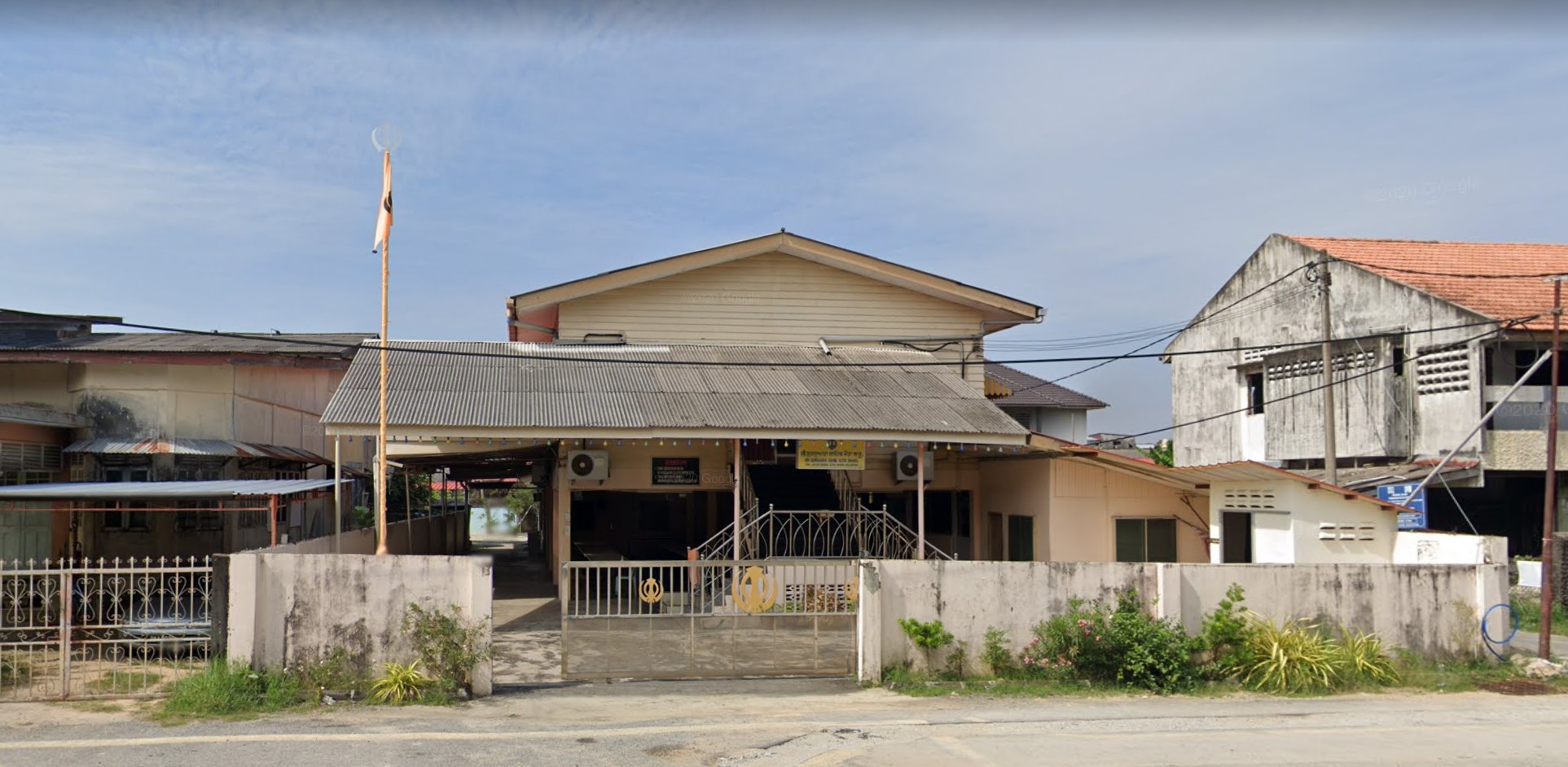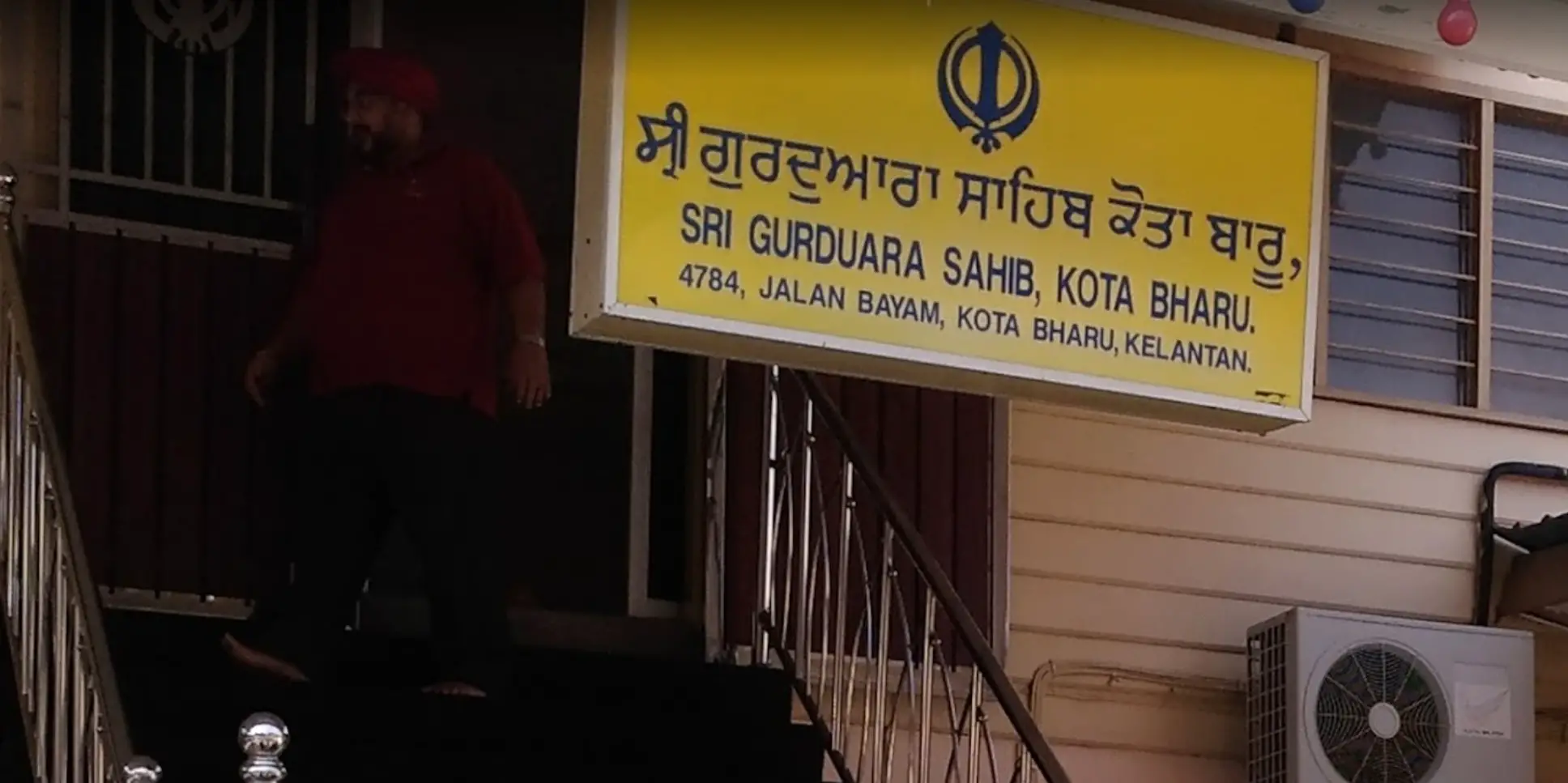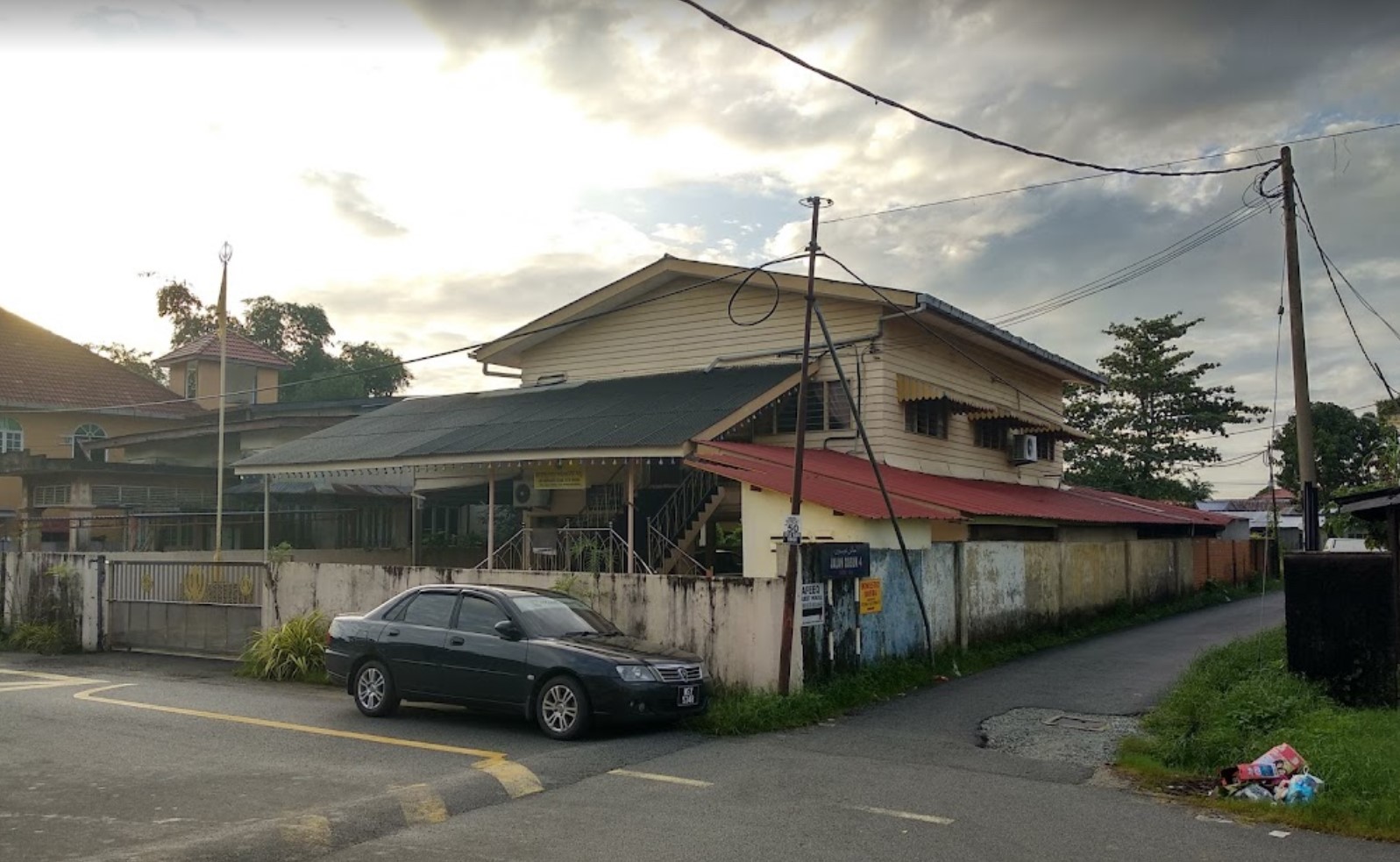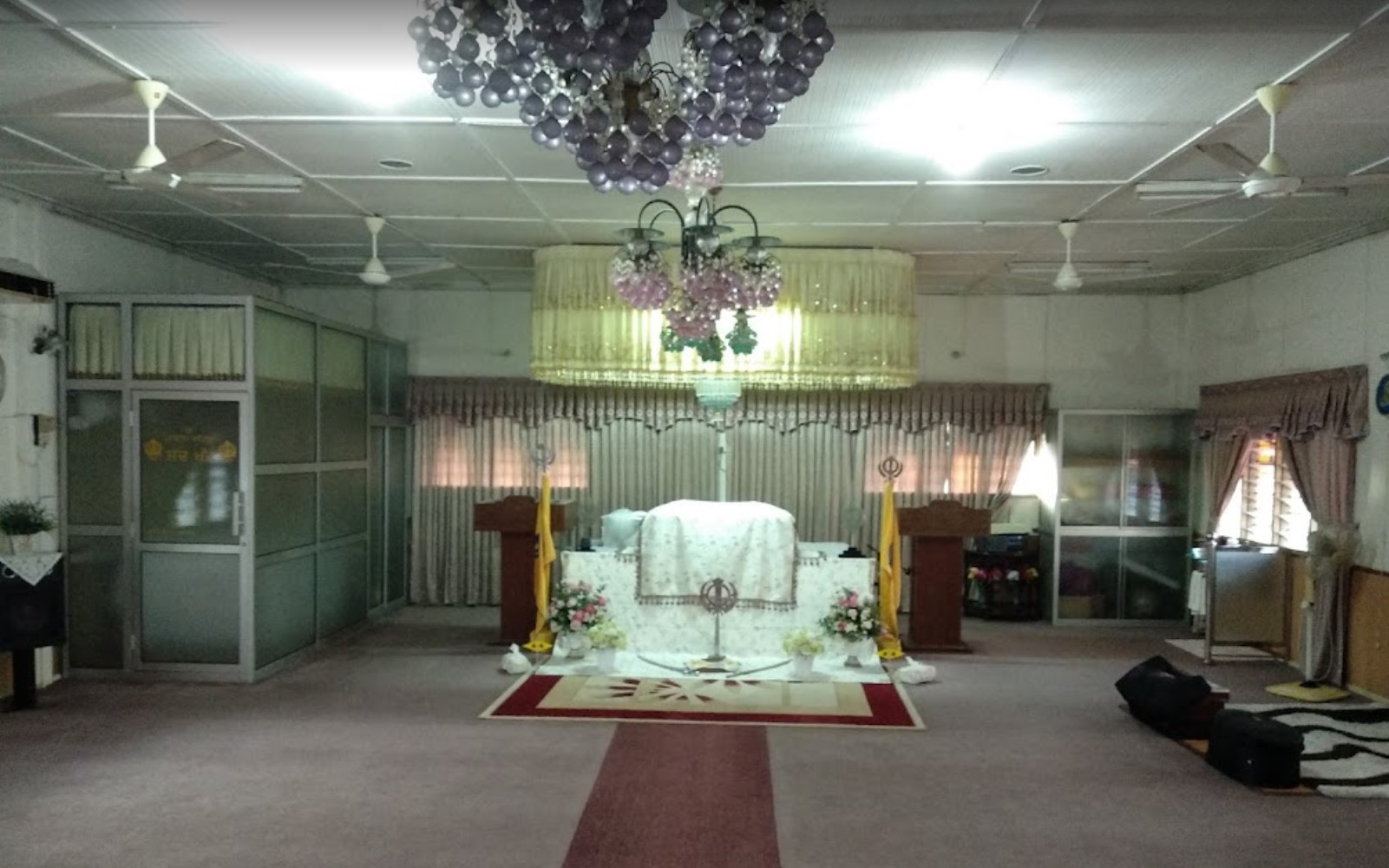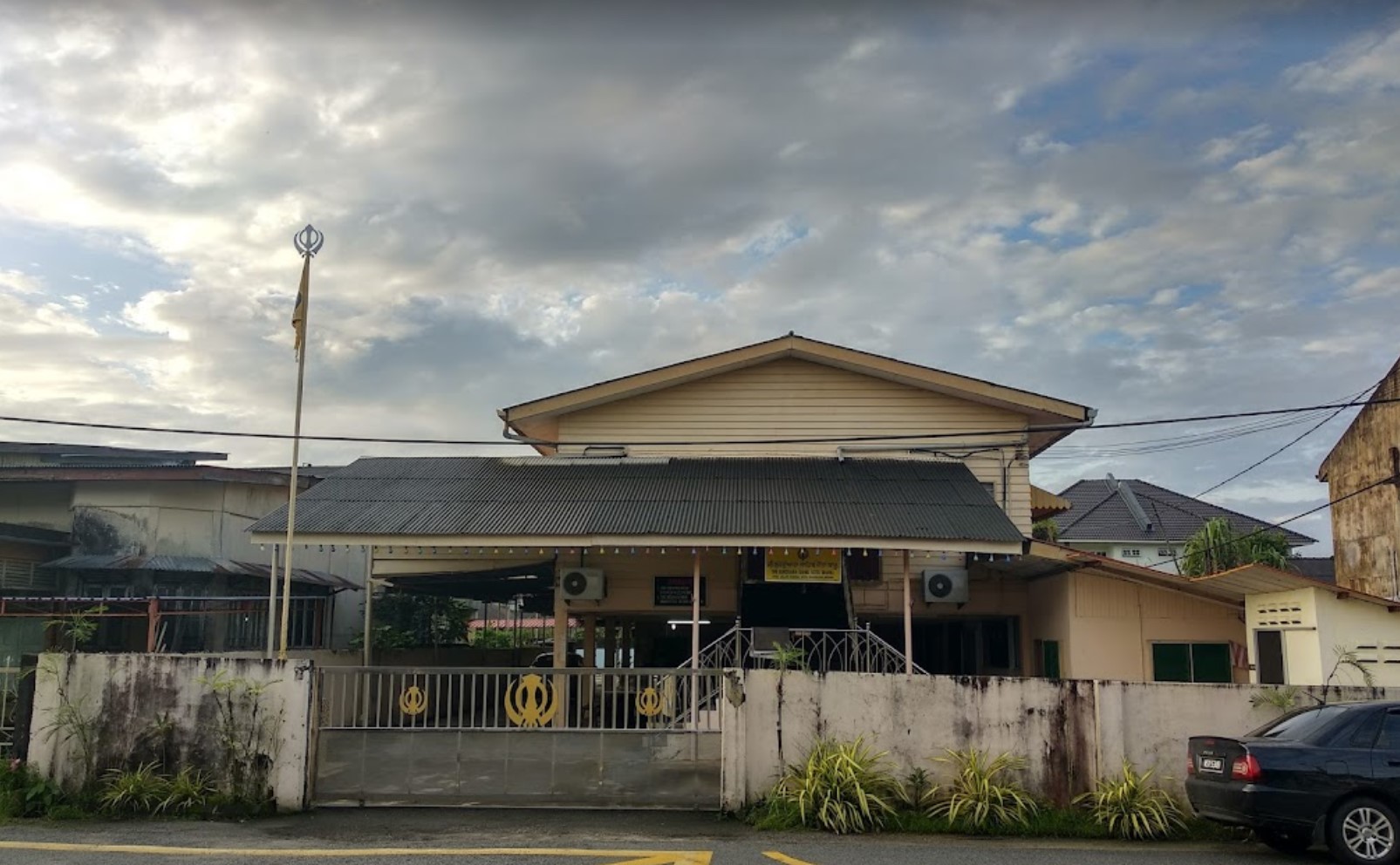Gurudwara Sahib Kota Bahru,Kelantan
In the early 1920’s, there were a few Sikhs in the Police Force in Kota Bharu. Some of the early Sikh settlers were engaged in dairy farming or worked as watchmen. To participate in the weekly prayers, these Sikhs traveled to the nearest Gurdwara Sahib in Tumpat. They crossed the Kelantan River by ferry and then had to board a train from Palekbang to Tumpat. This mode of travel was very inconvenient and time consuming.
The Sikhs in Kota Bahru were not very inclined to build a Gurdwara Sahib in Kota Bahru. Baba Gopal Singh Ji (who later resided in Kampong Simee, State of Perak) went on a fast to motivate the Sikh sangat to establish a Gurdwara Sahib in Kota Bahru. Finally, in 1943, the Sikh community managed to obtain a piece of land in Jalan Bayam, the site in front of the present Gurdwara Sahib. The first Gurdwara Sahib in Kota Bahru was built in 1946.
The Malay Peninsula was occupied by the Japanese from December 1941 to August 1945. The Japanese administration handed over the State of Kelantan (as well as the States of Terengganu, Kedah and Perlis) to Thailand (Siam) in August 1943. After the defeat of the Japanese, Thailand restored these four States to the British Military Administration of Malaya in early 1946.
In the early 1950’s, the present site, which is 1,058 square meters in size, was obtained from the Government. A wooden double storey Gurdwara Sahib building was built on this site.
In 1972, the sangat decided to rebuild the Gurdwara Sahib. The Granthi, Bhai Gulzar Singh laid the foundation stone of the new Gurdwara building. This double storey building was completed in 1973 at a cost of RM24,000.00. The first floor consists of the Darbar Sahib. The ground floor has the Guru Ka Langgar hall, kitchen, Granthi Sahib’s quarters, a library cum office and two rooms for visitors. This Gurdwara Sahib is registered under the Societies Act as “Sikh Society Sri Sahib Kota Bharu.”
The management committee comprises of the President, Secretary, Treasurer and their assistants as well as seven committee members.
In 1992, a Punjabi class commenced that currently has 20 Sikh students enrolled. Committed volunteer Gurmukhi teachers run these classes every Saturday evening. In addition, tabla and waja classes for the community are also organised.
There are presently about 22 Sikh families who participate in the religious activities held in this Gurdwara Sahib. As there was no resident Granthi for more than 10 years, the families did the daily sewa voluntarily on a rotation basis. This cooperation resulted in the Sikh community here being well linked socially and spiritually. Their children participate regularly in the activities of the Darbar Sahib. The weekly programme is held on Fridays at 10.30a.m. while Sikh Naujawan programmes are also held occasionally. The Gurdwara Sahib now has a resident Granthi from India.
Courtesy:
Sikh Gurudwaras in Malaysia&Singapore
Saran Singh Sidhu AMN,PNM,FRNS
